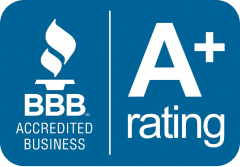You may have concerns about what each “component” of Medicare covers if you are getting close to Medicare eligibility. Original Medicare consists of Parts A and B, the Medicare Advantage program, and prescription medication coverage provided by Medicare Part D.
This article will explain the differences between Medicare Part B and Medicare Part D and how each one handles the cost of prescription drugs.
What is Medicare Part B?
It is common to refer to Medicare Part B as the “outpatient” portion of your Medicare coverage.
Visits to the doctor, diagnostic tests, and other related services and supplies are commonly covered by Medicare Part B. Preventive services including checkups, screenings, and immunisations are typically covered by Medicare Part B as well. Some types of outpatient drugs may also be covered by Medicare Part B.
What is Medicare Part A?
Inpatient care, such as that provided in a hospital or nursing home, is typically covered by Medicare Part A.
Although Medicare Advantage plans may have somewhat different premiums than Original Medicare, by law, they must provide all of the same benefits. Depending on the specifics of the plan, Medicare Advantage may also include coverage for medications.
What is Medicare Part D?
If you are enrolled in Medicare Part A and/or Part B, you are eligible to enrol in Medicare Part D, which provides supplemental prescription medication coverage. Medications prescribed by your doctor for the treatment of your illness or injury are normally covered by Medicare Part D Prescription Drug Plans. Plans are not required to cover all medications, but they must cover a minimum set of medications useful for treating the vast majority of diseases and disorders. Vaccines that are accessible commercially but are not covered by Medicare Part B may be eligible for coverage under Medicare Part D.
A formulary is a list of prescription drugs and their associated costs that are used by all Medicare Part D plans. Make sure the Medicare Part D plan you’re considering covers your daily prescription prescriptions by checking the formulary.
Depending on the Medicare Part D plan you select, your out-of-pocket expenses for Medicare-covered prescription medicines may be higher or lower. Medicare Part D requires you to pay a coinsurance or copayment amount for each approved prescription, and there may be an annual deductible to meet before you may begin receiving benefits.
What prescription drugs does Medicare Part B cover?
Part B of Medicare pays for some prescription drugs you acquire from your doctor or other outpatient facility. In most cases, medications administered via injection or infusion will be covered. Insulin administered via an external insulin pump is one example of a drug that may be covered by Medicare Part B since it is used in conjunction with durable medical equipment.
Oral cancer treatments, transplant drugs, immunosuppressive drugs, and drugs used to treat end-stage renal illness may all be covered by Medicare Part B. (ESRD). Injectable medications, such as clotting factors and osteoporosis treatments, that you administer to yourself at home may also be covered.
After the Medicare Part B deductible is met, your typical out-of-pocket cost for eligible drugs is 20% of the Medicare-approved price.
How does Medicare Part B compare to Medicare Part D?
You may compare Medicare Part B and Medicare Part D prescription drug coverage with the following chart.
| Medicare Part B | Medicare Part D | |
| Eligibility | Must be 65 or older with appropriate employment experience. If you are disabled or have end-stage renal disease (ESRD), you may be eligible for Medicare before age 65. | Anyone signed up for Medicare (A and/or B) |
| Vaccines | You may need vaccinations against influenza, pneumococcal disease, hepatitis B, and maybe other diseases. | Vaccines available for sale that are not paid for by Medicare Part B |
| Insulin | However, only when coupled with an insulin pump | Unless you’re going to be using a pump, of course. |
| Oral medications | Generally limited to:· Oral cancer medications· Oral medications to treat nausea as a result of cancer treatment· Oral immunosuppressive medications· Certain transplant drugs· ESRD drugs | Includes the vast majority of available oral medicines; For more information, please see to your policy’s formulary. |
| Injections and infusions | If it’s required to treat your ailment, it’s usually covered. | Injectables and intravenous fluids may be covered if they are deemed medically essential but are not covered by Medicare Part B. |
| Costs | After the Medicare Part B deductible has been met, the patient is responsible for 20% of Medicare-approved expenses. | The share of healthcare costs not paid for by insurance (copayment or coinsurance). In some cases, a deductible may apply annually. |
With limited exceptions, Medicare Part B often does not pay for over-the-counter oral drugs used at home. In contrast, Medicare Part D Prescription Drug Plans often cover the vast majority of oral prescriptions your doctor prescribes. If you or your doctor have any questions regarding whether or not a specific drug prescribed by your provider is covered under your plan, you should consult your plan’s formulary.
Simply type in your postal code above to begin your search for a Medicare Part D Prescription Drug Plan in your area.








